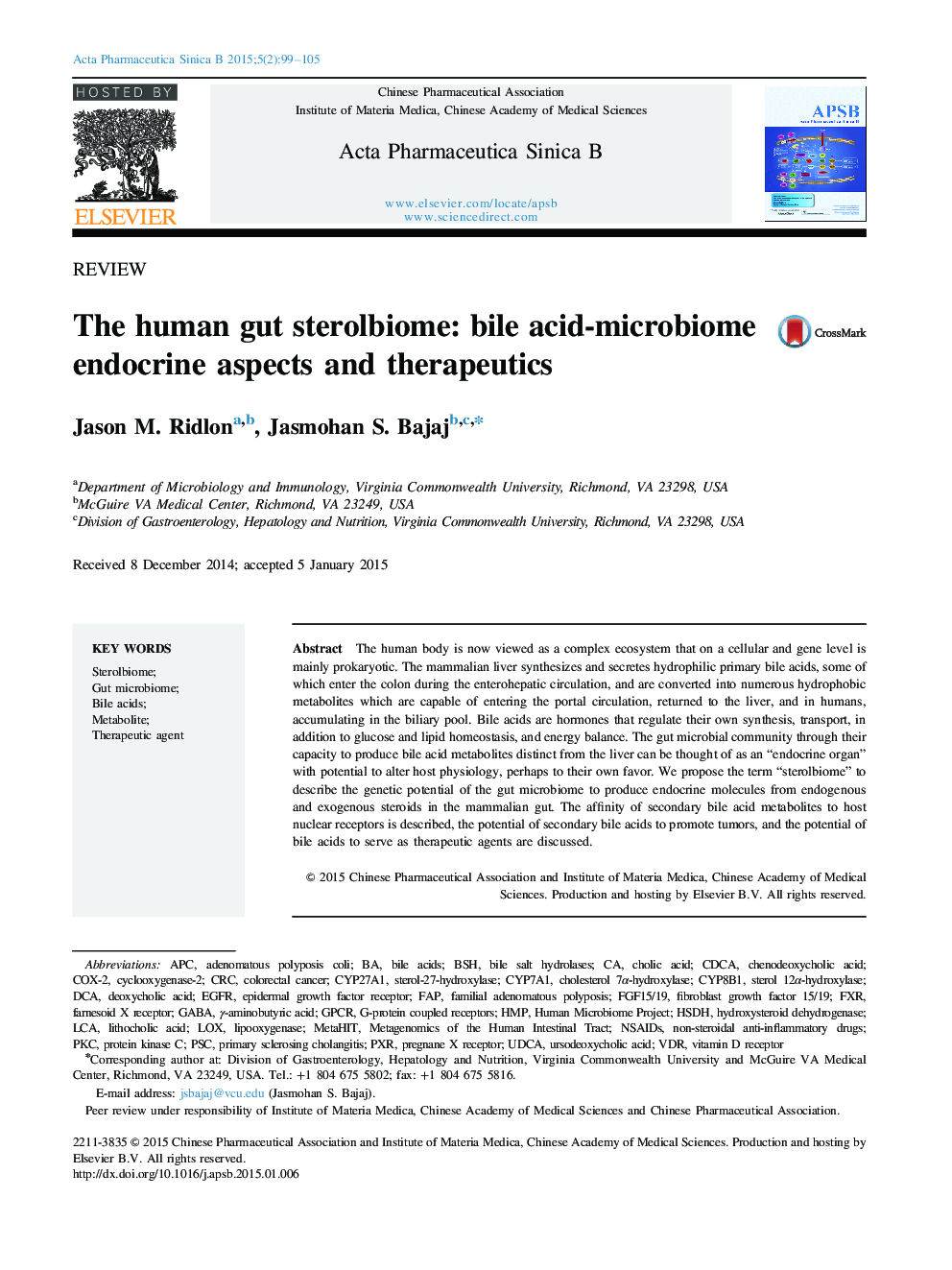| کد مقاله | کد نشریه | سال انتشار | مقاله انگلیسی | نسخه تمام متن |
|---|---|---|---|---|
| 2474604 | 1113151 | 2015 | 7 صفحه PDF | دانلود رایگان |
The human body is now viewed as a complex ecosystem that on a cellular and gene level is mainly prokaryotic. The mammalian liver synthesizes and secretes hydrophilic primary bile acids, some of which enter the colon during the enterohepatic circulation, and are converted into numerous hydrophobic metabolites which are capable of entering the portal circulation, returned to the liver, and in humans, accumulating in the biliary pool. Bile acids are hormones that regulate their own synthesis, transport, in addition to glucose and lipid homeostasis, and energy balance. The gut microbial community through their capacity to produce bile acid metabolites distinct from the liver can be thought of as an “endocrine organ” with potential to alter host physiology, perhaps to their own favor. We propose the term “sterolbiome” to describe the genetic potential of the gut microbiome to produce endocrine molecules from endogenous and exogenous steroids in the mammalian gut. The affinity of secondary bile acid metabolites to host nuclear receptors is described, the potential of secondary bile acids to promote tumors, and the potential of bile acids to serve as therapeutic agents are discussed.
We propose the term “sterolbiome” to describe the genetic potential of the gut microbiome to produce endocrine molecules form endogenous and exogenous steroids in the mammalian gut. The affinity of secondary bile acid metabolites to host nuclear receptors is described, the potential of secondary bile acids to promote tumors, and the potential of bile acids to serve as therapeutic agents are discussed.Figure optionsDownload as PowerPoint slide
Journal: Acta Pharmaceutica Sinica B - Volume 5, Issue 2, March 2015, Pages 99–105
